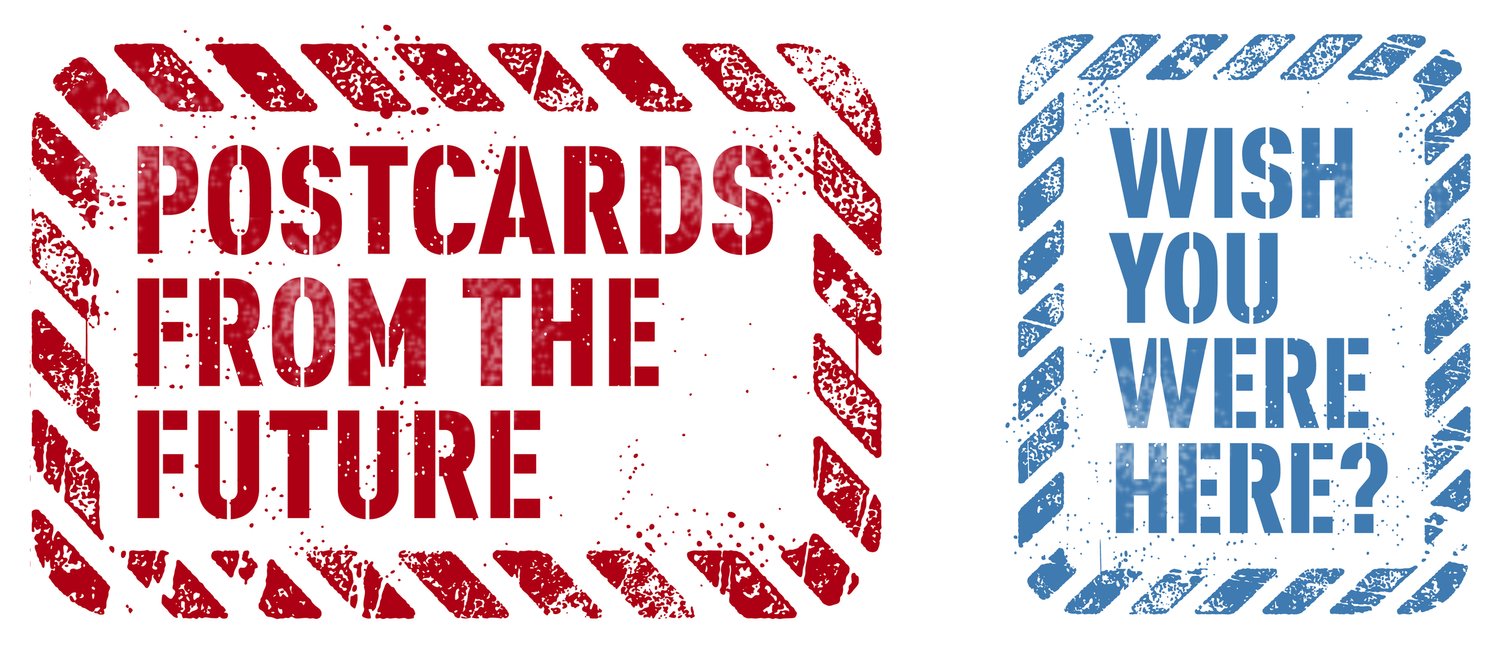Background
Postcards From The Future by GMJ
Climate change is one of the great global challenges of our time… our ability ultimately [is] to achieve a long-term global goal [that] will depend on affordable, new, more advanced, and innovative technologies, infrastructure, and practices that transform the way we live, produce and use energy, and manage land.
(Excerpt from ‘Declaration of Leaders Meeting of Major Economies on Energy Security and Climate Change’, G8 Summit, Hokkaido, Japan 9 July 2008)
Meanwhile climate change progresses remorselessly, now driven by feedbacks from the Earth as well as our increases in emissions and land use. There is no tipping point; we are sliding down a bumpy slope that grows ever steeper to the future hot world.
(James Lovelock from ‘A Final Warning: The Vanishing Face of Gaia’ 2009)
The divergence of opinion voiced in recent climate change debates and its expected (and unexpected) consequences, fuel public confusion over the issues. Equally puzzling are visual perceptions of how the natural landscape and built environment is physically changing around us. During the G8 Summit, GMJ searched for images to illustrate the debates. They found surprisingly, very few. The visual language of climate change and technological innovation was presented in dry scientific motifs of graphs, maps and data projections. Yet the artists’ own travels around the world had brought them face-to-face with monumental structures that instilled a strange beauty of their own, from giant solar panels in Spain to thermal chimneys in Australia. While technological advances allow us to harness and harvest wind, solar and wave energy, GMJ recognised the potential of emerging physical landmarks on redefining geographical and political borders. How conceivable is it to imagine a shift in economic power whereby solar panels in West Africa become the principal energy source for Western European markets?
Postcards From the Future evolved from two earlier projects. London Futures, an online exhibition in July 2008 featured views of the city re-imagined under irrevocable environmental change. In 2009 GMJ were commissioned by Condé Nast to design the cover of the relaunched UK edition of Wired Magazine. Headlined ‘Your Life in the Future’, their image, based on an aerial shot of London by the British photographer, Jason Hawkins, unfurled a seductive futuristic cityscape dotted with floating cities and flying machines. For over 20 years, GMJ have created projections for architectural projects, manipulating images in a craft deliberately honed to ‘make things disappear.’ The search for new forms of imagery related to globalization and climate change presented the opportunity to picture London in the not so distant future.
Looking at the Wired cover it is tempting to read it as a paean to Ridley Scott’s 1982 film, Blade Runner. GMJ were however, averse to creating views of London that appeared so visually remote that the city lost its sense of familiarity. They focused on recognizable images anchored in the present, inspired by early modern architect-inventors, Carlo Mollino (1905–1973) and Buckminster Fuller (1895–1983). Mollino was a true polymath whose designs for racing courses, aircraft hangars and furniture were led by his passion for speed, dynamism and beauty. Massachusetts-born Fuller, in his quest to create improved forms of human habitation in the 1940s, devised the geodysic structural system, a supremely inventive and influential approach to design.
GMJ are drawn to imagery that thrives on the juxtaposition of forms and settings. The roots of this idea are traced in the eponymous poetry of Comte de Lautréamont, the Uruguyan-born poet of late 19th century Paris: ‘As beautiful as the chance meeting on a dissecting-table of a sewing-machine and an umbrella’. The theme of his work, later canonized by the Surrealists, informed much of Dadaist and early Surrealist art, examples of which influenced GMJ, notably photo-montages by John Heartfield and photography by Man Ray in the 1920s and 30s. Later visual influences include Ed Ruscha’s emblematic paintings of West Coast America; Richard Hamilton’s signature collages of the 1950s up to Shock and Awe (2007), his satirical image of Tony Blair as political cowboy; and the nightmare visions of Jake and Dinos Chapman. Early creative British advertising imagery, such as Saatchi & Saatchi’s iconic poster, The Pregnant Man (1971), also exerted a significant impact on Madoc Jones’ and Graves’ approach to image-making.
Author : Chantal Condron, 2011
